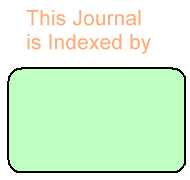R S Okor
Pharmaceutics & Pharmaceutical Technology, Faculty of Pharmacy, University of Benin, Benin City, Nigeria;Published: 17 December 2005
Citation: Okor RS. Brittle fracture during tableting - a problem for the pharmaceutical industry. Trop J Pharm Res 2005; 4(2):481-482 doi: 10.4314/tjpr.v4i2.1
© 2005 The authors.
This is an Open Access article that uses a funding model which does not charge readers or their institutions for access and distributed under the terms of the Creative Commons Attribution License (http://creativecommons.org/licenses/by/4.0) and the Budapest Open Access Initiative (http://www.budapestopenaccessinitiative.org/read), which permit unrestricted use, distribution, and reproduction in any medium, provided the original work is properly credited..
Brittle fracture refers to capping and lamination of tablets, which occurs at the point of ejection of the tablets from the machine dies. The problem is attributable primarily to the presence of entrapped air (voids) or low density regions in the tablets. The latter (low density region) is in turn associated with an uneven consolidation of the tablet during compaction. The voids or low-density regions constitute weak points in the tablet from which cracks emanate and propagate when the tablet is subjected to diametral stress (e.g. die wall pressure). Brittle fracture is thus a result of stress concentration at the edge of the void or lowdensity region. Sudden elastic recovery following tablet ejection from the die has been implicated as a possible cause of brittle fracture, supported by the evidence of direct correlation between the plastoelasticity of materials and the brittle fracture index (BF1) of resulting tablets1-3. This means that predominantly elastic materials are more prone to brittle fracture than plastic materials. Nevertheless the theory of stress concentration at the edge of a void and the subsequent crack propagation from it is more acceptable. Plastic materials ameliorate brittle fracture because they deform readily under stress to relieve the stress that would have concentrated at the edge of the void4-5. Hiestand et al4 applied crack theory to develop a quantitative ex
Brittle fracture during tableting is considered a problem for the pharmaceutical industry because it is associated with formulation factors such as insufficient binder, a high plastoelasticity of the tableting base, and process factors such excessive compression pressures and overdrying of granules/ powders. Very often tableting is halted as soon as brittle fracture is observed; the batch is either rejected or reprocessed, which is un-economical. It is therefore recommended that the Hiestand mathematical ex
References: 1. Itiola AO and Pipel N. Tableting characteristics of metronidazole formulations. Int J Pharm. 1986; 31: 99-105. 2. Okor RS, Eichie FE and Ngwa CN. Correlation between tablet mechanical strength and brittle fracture tendency. J Pharm. Pharmacol. 1998; 4: 511-513. 3. Uhumwangho MU and Okor RS. Anomalous effect of compression pressure on the brittle fracture tendency of α-cellulose tablets. Int J Pharm 2004; 284: 69-74. 4. Heistand EN Wells JE, Poet CB and Ochs JF. Physical process of tableting .J. Pharm Sci. 1977; 66: 510-519. 5. Roberts JR and Rowe RC. Brittle fracture propensity measurements on tablet-sized cylindrical compacts. Pharm Pharmacol. 1986; 38: 526-528.
Archives


News Updates